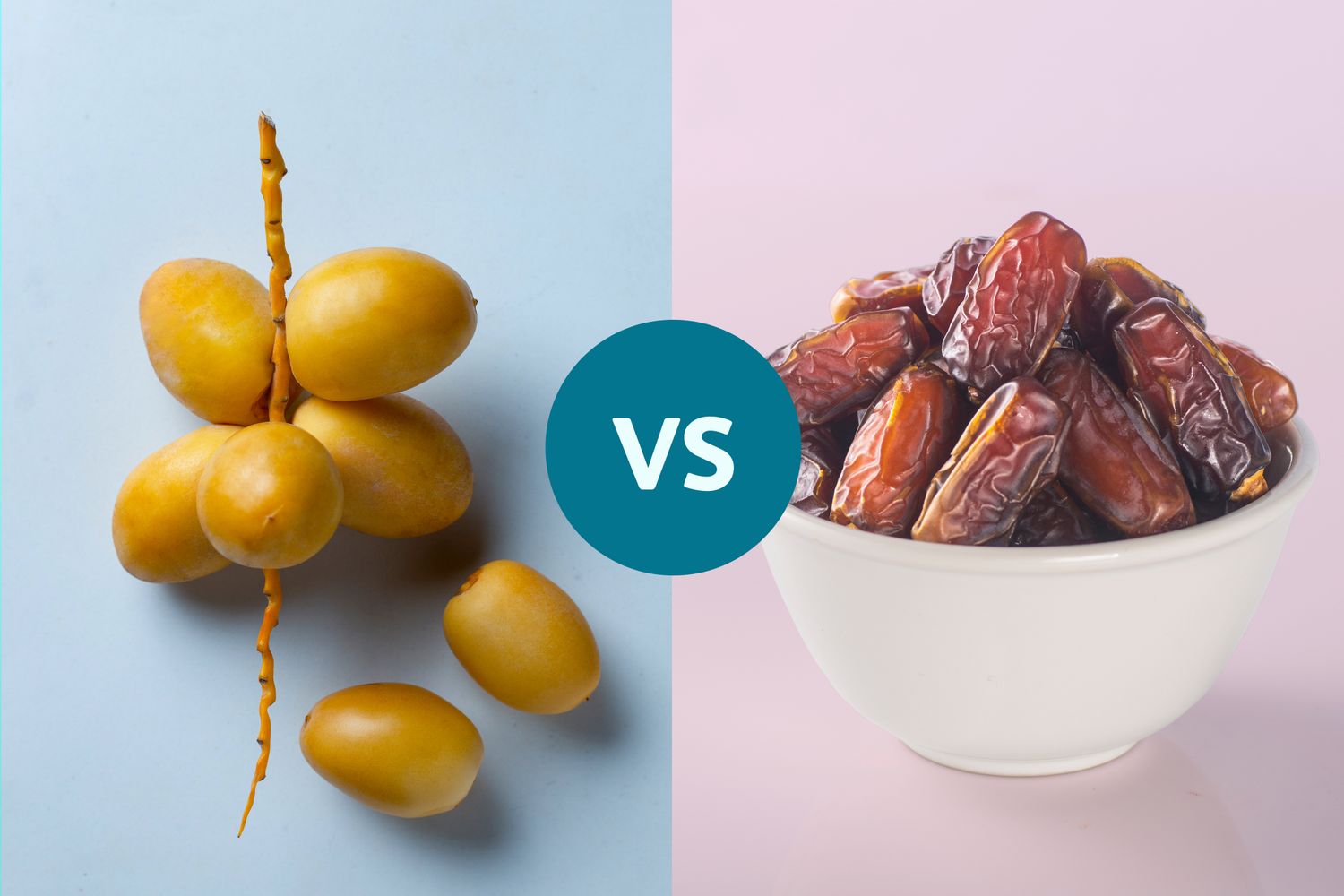Fresh Dates (100 g)
Dried Dates (100 g)
Fresh Dates Are Lower in Sugar and Calories
Fresh dates have a higher water content, making them lower in calories and less concentrated in sugar, said Natalie Allen, RD, a clinical associate professor of nutrition and dietetics at Missouri State University.
“Dried dates are more calorie-dense, but offer a convenient source of quick energy year-round,” Allen said.
If you can access fresh dates, they’ll be about 60% water as compared to dried dates, which are only about 25% water, said Joan Salge Blake, RDN, a dietitian and nutrition professor at Boston University.
The water content in fruit is important as it contributes to satiety, or that feeling of fullness, Blake explained.
“This higher water content can contribute to satiety sooner than dried dates,” she said. “Without the higher water content, dried dates can easily be over-consumed as they have more calories per bite.”
Blake said dried dates also may contain added sugars, depending on the brand that you purchase.
Dried Dates Offer More Fiber and Minerals
Both fresh and dried dates provide essential minerals, but the drying process concentrates the nutrients. So, while dried dates contain more sugar and calories than the fresh kind, they are also a richer source of fiber, calcium, and potassium.
In fact, dried dates may contain more than double the amount of fiber as fresh dates.
Fresh Dates Retain More Antioxidants
Research has shown that dried dates have lower vitamin and antioxidant content than fresh ones.
One study on the potential for dates to be developed into functional energy bars found that dried dates contain slightly more fat and protein than fresh ones.
The study also stated that dates can be a relatively good source of B vitamins, vitamin C, Vitamin A, and Vitamin K. However, vitamin depletion can occur during the drying process, meaning fresh dates may contain more of these important vitamins.
Another study, which analyzed fresh and sun-dried dates of three native varieties from Oman for their antioxidant activity, found that all date varieties are a good source of natural antioxidants and could be considered a functional food. However, some of their antioxidant constituents are lost during sun-drying.
Flavor and Texture Vary Between Fresh and Dried Dates
While both fresh and dried dates have a sweet taste, their flavor and texture differ due to the drying process.
Fresh dates tend to be softer, more moist, and juicier, Allen said, while dried dates will have less moisture and a firmer, chewier texture.
In terms of taste, fresh dates are rich and caramel-like. Dried dates are even sweeter and toffee-like due to their higher sugar content.
Verywell Health uses only high-quality sources, including peer-reviewed studies, to support the facts within our articles. Read our editorial process to learn more about how we fact-check and keep our content accurate, reliable, and trustworthy.
-
Medjool Days. Dried Dates vs Fresh Dates: A Complete Guide to Their Differences and Benefits.
-
Barakat H, Alfheeaid HA. Date palm fruit (Phoenix dactylifera) and its promising potential in developing functional energy bars: review of chemical, nutritional, functional, and sensory attributes. Nutrients. 2023;15(9):2134. doi:10.3390/nu15092134
-
Al-Farsi M, Alasalvar C, Morris A, Baron M, Shahidi F. Comparison of antioxidant activity, anthocyanins, carotenoids, and phenolics of three native fresh and sun-dried date (phoenix dactylifera l.) varieties grown in oman. J Agric Food Chem. 2005;53(19):7592-7599. doi:10.1021/jf050579q

Thanks for your feedback!
What is your feedback?
Helpful
Report an Error
Other
